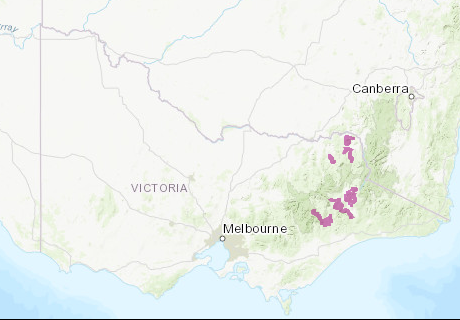17 November 2019

Aerial baiting, a highly effective wild dog control tool for remote and inaccessible areas, is presently under review in Victoria. As with any public debate, misinformation sometimes muddies the facts so we thought this a great opportunity to outline the facts.
Common myth: Aerial baiting is carried out indiscriminately across public lands.
Fact: Aerial baiting is highly targeted to corridors and travel ways that wild dogs use in areas that have limited access in the in 3km Livestock Protection Buffer zones between public and private lands. The presence of warning signs is a regulatory requirement only, and provides no indication of bait locations. View the exact locations of bait lines in eastern Victoria, the only part of the state that employs aerial baiting.
Common myth: Aerial baiting will wipe out pure-bred dingoes.
Fact: In Victoria the dingo is listed as ‘Threatened’ and is protected under the Wild Life Act 1975. Aerial and ground baiting only occurs on private land and within the 3km Livestock Protection Buffer zones on public land, for the protection of livestock. This zone may also be assisting with dingo conservation by preventing domestic dogs from wandering into national parks and cross breeding. To put the aerial baiting program in perspective, only 2.7% of eastern Victoria’s total public land area is aerial baited, leaving 4.375 million ha for native wildlife and dingoes to persist undisturbed.
Common myth: Aerial baiting doesn’t’ work.
Fact: Victoria’s Wild Dog Program has been a stand-out performer nationally in terms of reducing wild dog attacks on livestock. The number of sheep killed or maimed during the past five years has reduced by up to 71% and, in some areas, stock losses have been almost eliminated. The state’s remaining key hot spots for attacks are in areas where there has been no aerial baiting.
Common myth: Wild dogs play an important apex predator role by suppressing foxes and feral cats.
Fact: The scientific literature is still out on this theory with research showing variability in the ability of wild dogs to supress foxes or cats. The ability of wild dogs to supress these smaller predators is highly dependent on their environment, habit and prey availability. Recent research shows that feral cats do live alongside dingoes and wild dogs without any negative effects on their behaviour, hunting activity or breeding. In fact, a central Queensland study (Fancourt et al 2019) showed feral cat numbers were actually higher where they co-existed with dingoes.
Common myth: Aerial baiting with 1080 will wipe out the Spotted tailed quoll
Fact: As a native species Spotted Tailed Quoll, Dasyurus maculatus, is highly tolerant of 1080, unlike dingoes and wild dogs. In fact, research (Cremasco and Selles 2008; Fleming and Ballard 2019); Meyer-Gleaves 2008) has shown they are about 100 times more likely to be found in areas where wild dogs and foxes are effectively controlled. In fact, Spotted tailed Quoll populations in southern Kosciuszko National park adjacent to the Victorian border are thriving in the presence of aerial baiting.
Share